Trump and His Homeland Security Chief Noem Boost Insecurity in Disaster-Prone Communities
Revisiting a vital theme amid Trump's FEMA cuts
The post and discussion of disaster justice with “disasterologist”
below originally ran in November 2024. But it must be revisited now that Team Trump has cut the Federal Emergency Management Agency’s Building Resilient Infrastructure and Communities progam, or BRIC - the biggest source of federal support for cutting vulnerability to disaster-generating hazards where the need is greatest.The program was created in the first Trump term and greatly expanded by President Biden. Even so, Headwaters Economics (my favorite risk mitigation think-and-do-tank) last year found that the demand exceeded the capacity five times over in 2023 and rural communties with the lowest governmental capacity were greatly disadvantaged in seeking the resource.
Sure, there are plenty of issues to address in this program and across FEMA, as was the case at now-devastated USAID. But this wrecking ball approach is destined to imperil people and vital systems in red and blue states. Here’s how Politico’s E&E News described the cuts on April 4:
Federal Emergency Management Agency acting Administrator Cameron Hamilton wrote in a memo Thursday that the agency will not allocate the $750 million that was planned this year for Building Resilient Infrastructure and Communities grants. The BRIC program funds local projects that reduce damage from flooding, tornadoes and other weather-related events. FEMA also will stop funding projects that were previously approved for BRIC grants and are still underway, Hamilton wrote.
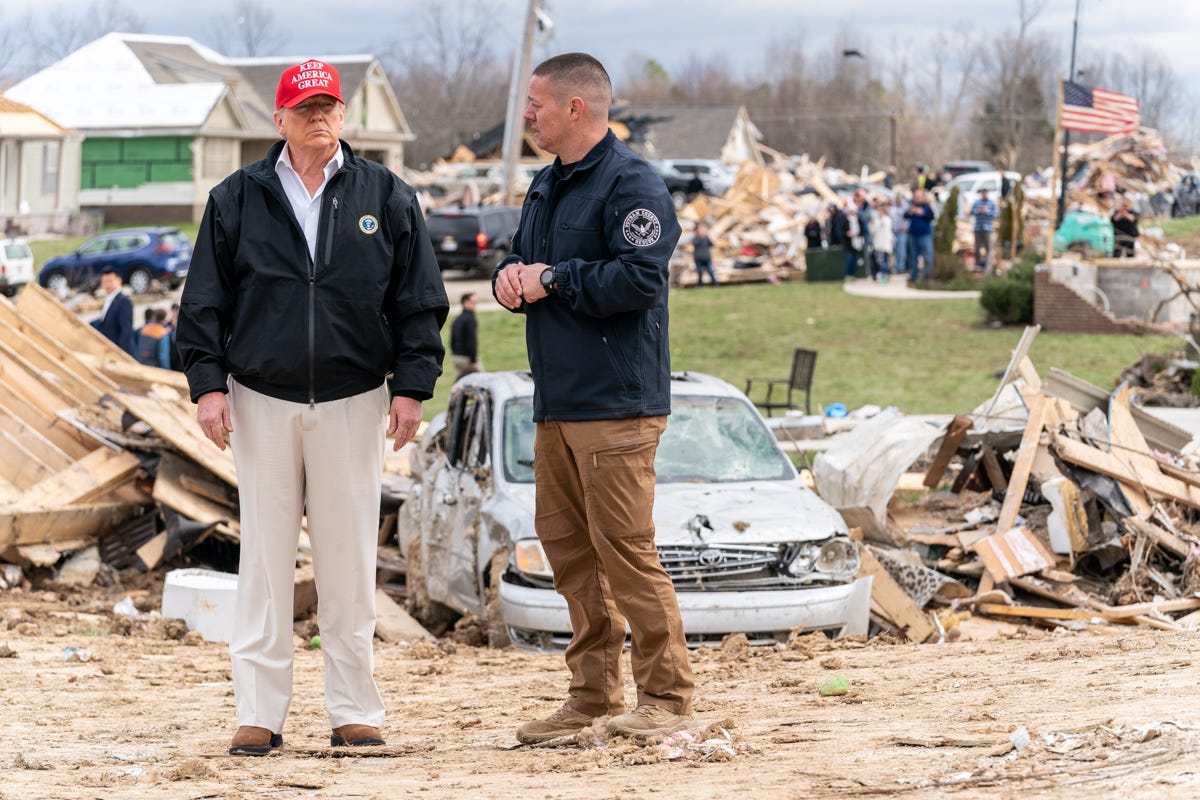
Here’s the grotesque press release from the agency laying out how clearly an administration claiming to focus on efficiency is guaranteeing worse - and costlier - outcomes when hazards strike. The language is all about recovery (which is always needed, but considers it a triumph to undercut risk reduction before the worse happens.
, whose Substack is an essential read if your focus is climate adaptation and resilience, reminded readers of the great value in investing before calamity:Research shows that spending money to reduce physical climate risks pays off many times over—$8-$13 for every dollar spent—and if the administration actually wanted "Efficiency Through State and Local Preparedness," surely reducing risk would head the list.
Here’s the slightly-adjusted post on my Sustain What conversation with Montano:
Amid a Barrage of Climate Calamities, "Disasterologist" Samantha Montano Puts the Focus on Disaster [In]Justice
Given that the incoming Trump administration seemingly deadset on disrupting the Federal Emergency Management Agency and National Oceanic and Atmospheric Administration, it’s high time to visit with a disaster policy expert.
So I reached out to my favorite “disasterologist,” Samantha L. Montano of Massachusetts Maritime Academy. Also watch or share on Facebook, LinkedIn, or X/Twitter at @revkin.
We explored the politicized attacks on FEMA, and recent grotesque missteps by a now-fired employee (which I tweeted about quite a bit).
We also explored Montano’s timely push for a ”disaster justice” movement. She sees public pressure as vital to driving new approaches to disaster risk reduction and management as climate extremes and community vulnerabilities combine to worsen calamities like Hurricane Helene.
Here’s a concise summary of her concept of disaster justice from an earlier Sustain What show on disaster readiness and responsiveness with my former Columbia colleague Jeff Schlegelmilch:
I’ve been a big fan of Montano for years, particularly because of her passion for testing the wide span of media paths, from books to TikTok to integrating Twitter into teaching a course on Hollywood’s myth-amplifying approach to disaster storytelling during COVID. Even there, she didn’t restrict her output to X. She wrote an article for Writers Digest’s screenwriter-focused publication breaking down best and worst practices. And she recently co-authored an academic paper on this teaching method: Disasterologists at the Movies: An Innovative Use of Twitter for Disaster Education. (Lead author, John Carr, tweeted a fantastic distillation of his related work for his doctorate.)
And
is here on Substack, where I hope you subscribe to her monthly roundup of disaster news and nuggets:Read her book: Disasterology: Dispatches From The Frontlines of The Climate Crisis. To get a feel for her writing and wisdom, you can start with a gripping excerpt posted by Amazon, in which Montano describes her experiences confronting the catastrophe wrought by Hurricane Katrina in New Orleans. As she explains, the long devastating shadow the flooding cast on thousands of lives put in harm’s way was not so much a result of the water as of racism, poverty, corruption and other drivers of loss in such events:
She’s doing the brave work of testing out TikTok. Here’s a useful fresh explainer of the profession and field called “emergency management”:
More reading and watching (Montano is here):
As Extreme Storms Strike Again, It's Time to Shake out Community Climate Vulnerabilities
🌧️ Please subscribe (free of charge) to this Sustain What newsletter - my journalistic journey building a cooler relationship between people, our planet and each other, one post at a time. ⛈️ One core theme is identifying steps that cut societal risk when the worst happens - whether the hazard is in the air, water or under our feet.
There are no natural disasters
This deserves repeating and repeating. Here’s a tight excerpt from a fabulous short explainer by YouTuber Miriam Nielsen in which Montano distills things perfectly:





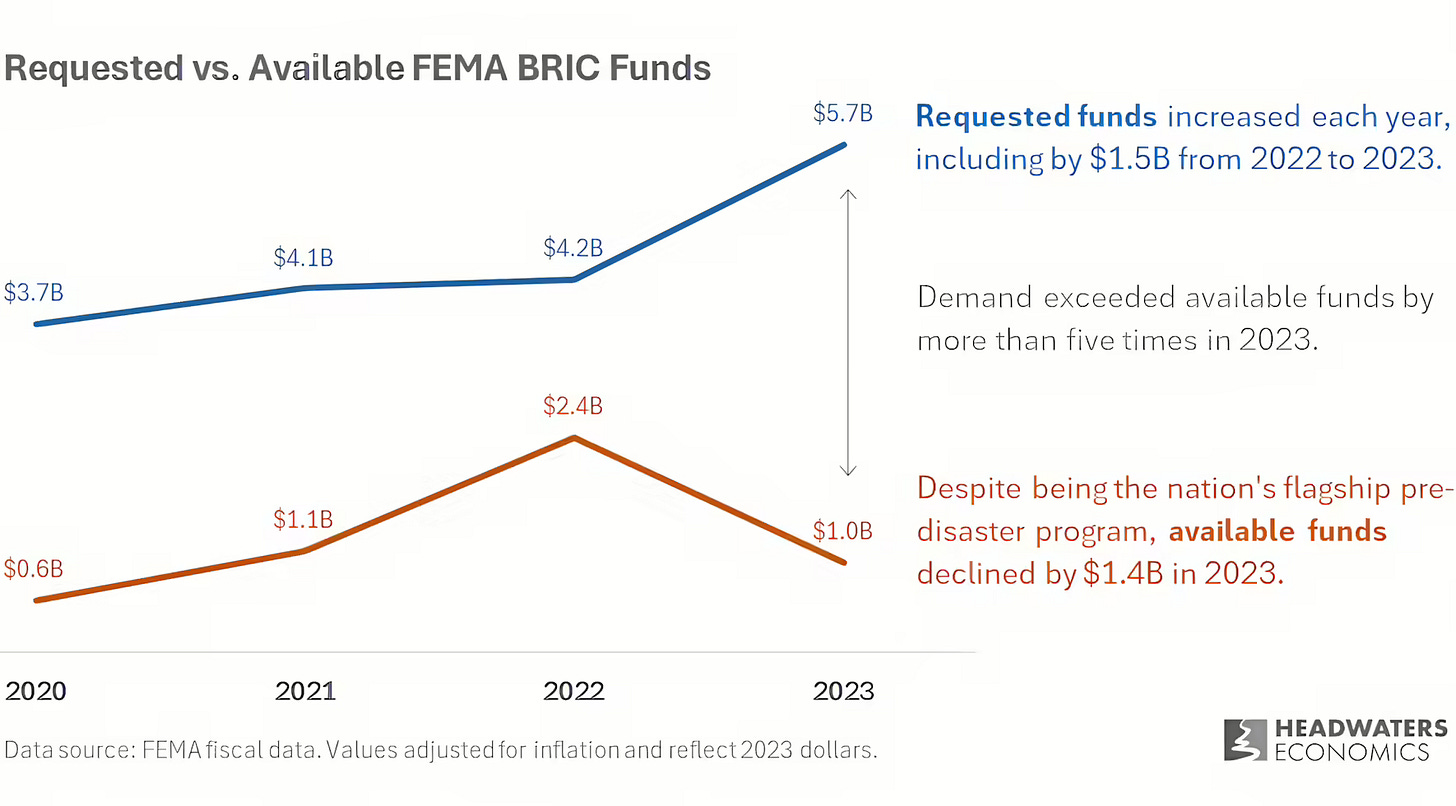

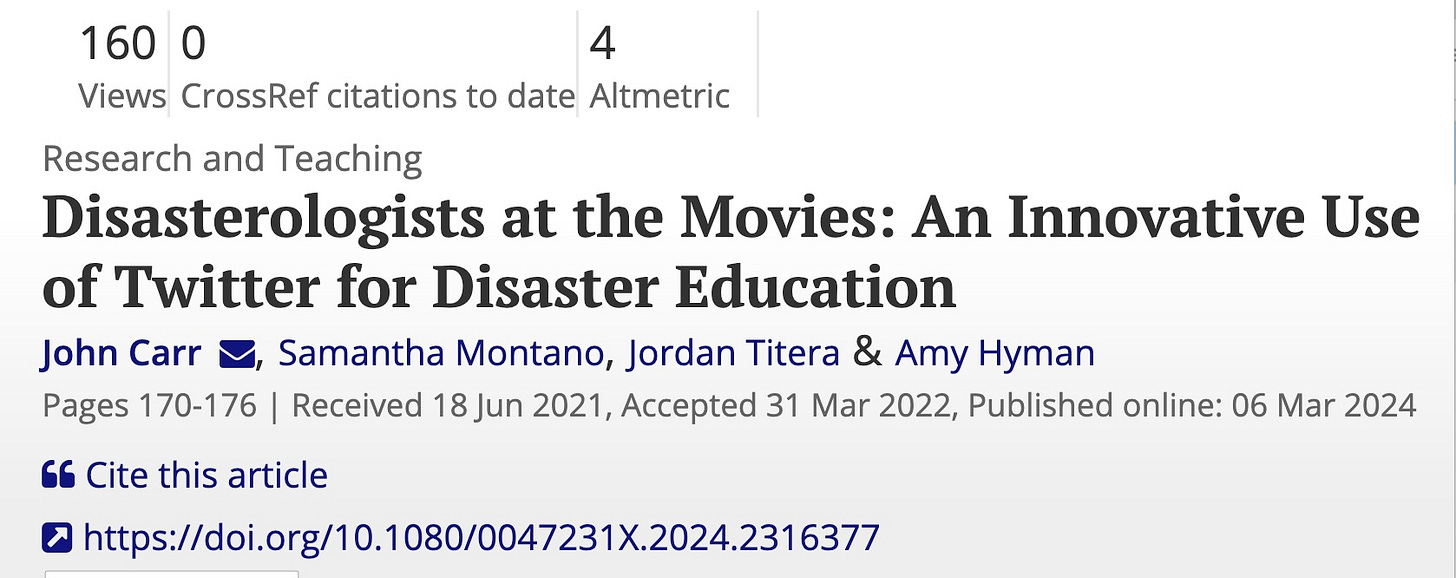
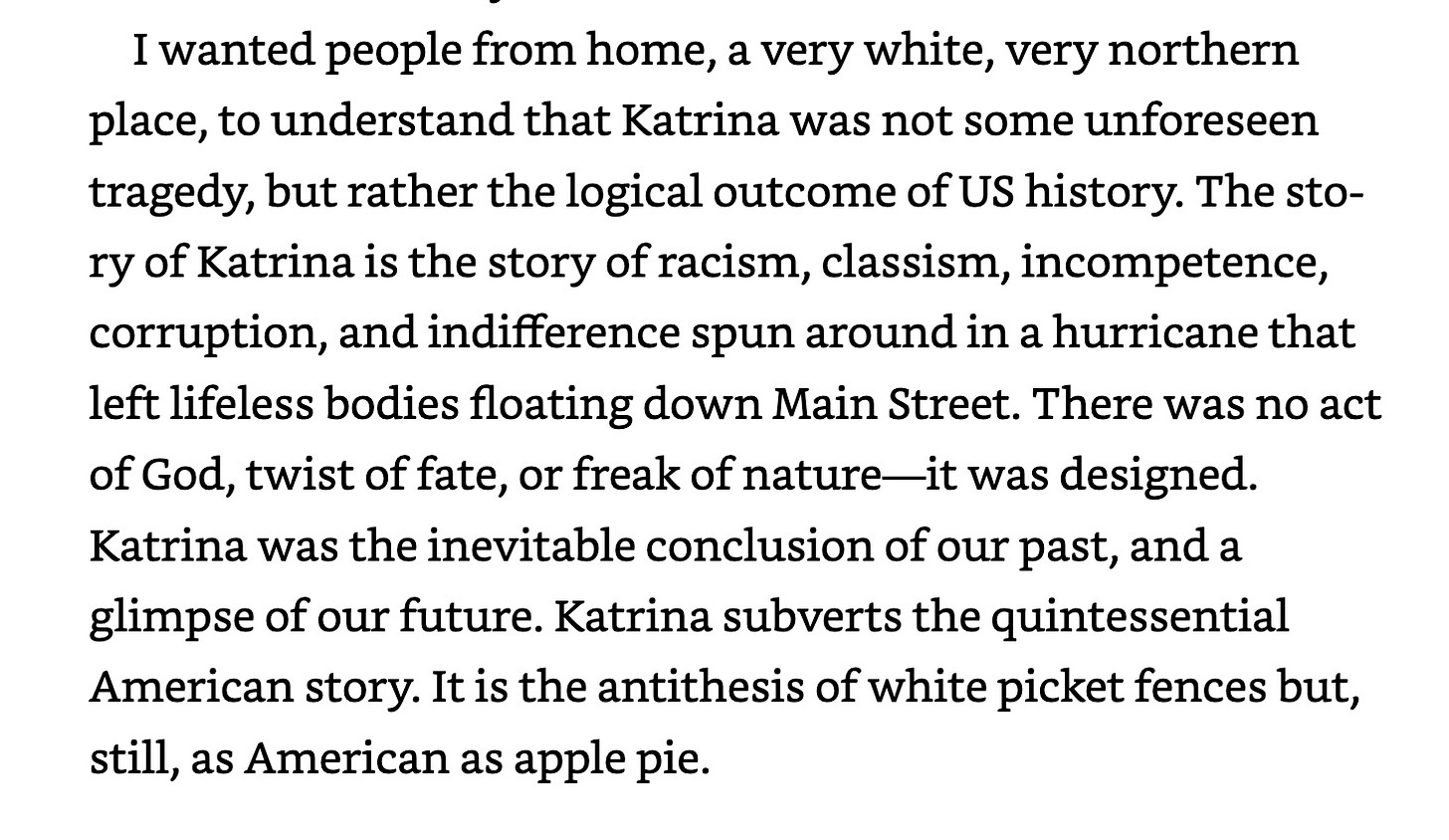
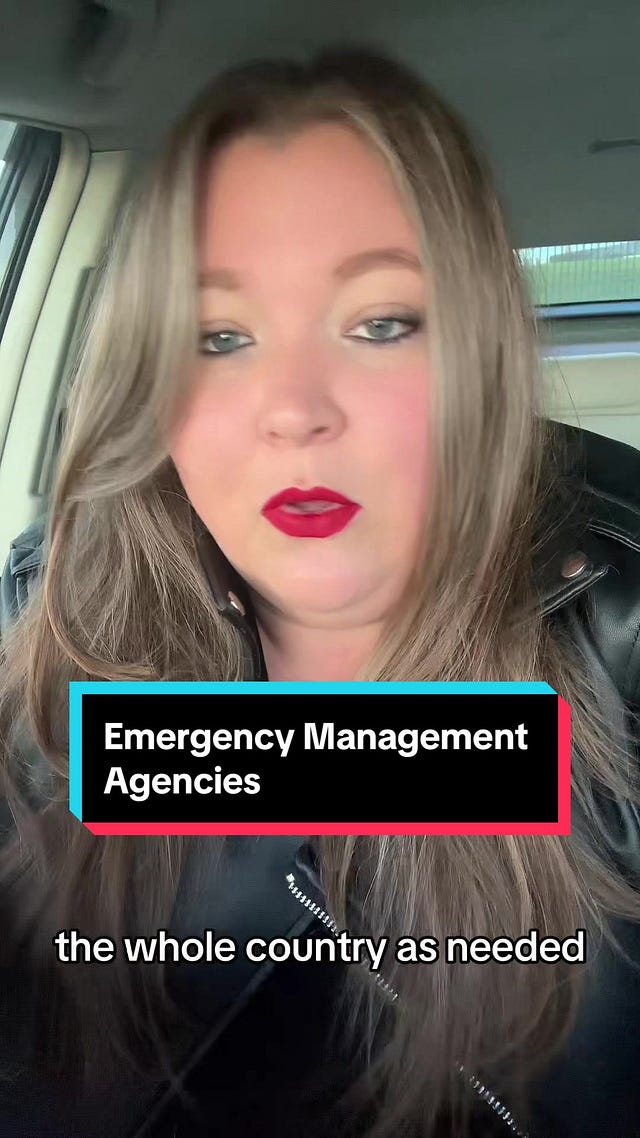


Disaster policy expert Ilan Kelman sent this:
It reminds me of W (George W Bush) announcing the end of Project Impact https://eric.ed.gov/?id=ED422712 on the day of the Nisqually earthquake during which Project Impact saved many lives